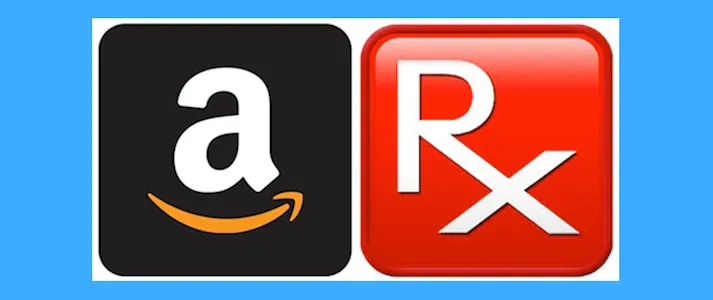NEW YORK — Pharmacy stands as a sizable growth opportunity for Amazon, and its avenues for market entry include acquisitions, with Rite Aid Corp. and Diplomat Pharmacy Inc. among potential targets, according to Cowen analysts John Blackledge and Charles Rhyee.
Cowen on Tuesday released an in-depth look at a potential Amazon pharmacy play in a report titled “Amazon’s U.S. Pharmacy Opportunity: Not Necessarily A Game Changer.”
Amazon Prime subscribers, in particular, offer a significant opportunity in prescription drug sales as well as synergy purchases in the areas of personal care, household goods and vitamins, according to Cowen’s analysis. Its proprietary survey data indicate that 67% of Prime customers would buy prescription medications from Amazon if they were available, and 51% of all customers would be interested in getting prescription drugs via Amazon.
“Amazon’s entry into the U.S. pharmacy market could be driven by a multiplatform approach with Whole Foods and multiple Prime platforms, coupled with high demand and purchasing synergies with Prime subscribers,” said Blackledge, Internet analyst at Cowen. “But the market opportunity is not nearly as large as other retail verticals we have analyzed, like apparel, consumables, and food and beverage grocery.”
In a bull case scenario, Amazon could generate U.S. pharmacy revenue of about $3 billion (1.5% of retail and mail pharmacy market share) in 2019, rising to approximately $9.5 billion (4% of retail and mail pharmacy market share) by 2023, excluding acquisitions, Cowen projected. Those figures exclude specialty pharmacy, according to the “Amazon’s U.S. Pharmacy Opportunity” report.
A base case scenario, the report said, pegs Amazon with U.S. pharmacy revenue of about $1.5 billion in 2019 (less than 1% of retail market share, excluding specialty) and climbing to $7.5 billion (3% retail market share, excluding specialty) by 2023.
“We also look at a bull case with a kicker, which would be Amazon acquiring Rite Aid,” said Rhyee, health care distribution and technology analyst at Cowen. “We think it would be an interesting way for Amazon to jump-start their way into the pharmacy market, as it would 1) provide necessary licenses; 2) give it some regulatory infrastructure, meaning the DEA and the FDA; 3) come with a small PBM, EnvisionRx, which would enable mail to a small degree; 4) give immediate access to retail network contracts for reimbursement; 5) add some immediate scale with $13 billion in drug spend; and 6) possibly come with sourcing options for generics, either through Walgreens or McKesson.”
Also making a potential acquisition of Rite Aid attractive to Amazon would be its price tag, which Cowen reckoned at an estimated value of around $5 billion. “It’s a relatively low-rent way [for Amazon] to expand into pharmacy in our view,” Rhyee added.
If Amazon launched pharmacy on Prime, Prime Now and in Whole Foods Market stores and acquired Rite Aid, Cowen projected its 2019 U.S. pharmacy revenue at about $20 billion, or about 10% of the nation’s retail and mail pharmacy market, excluding specialty pharmacy. That would grow to an estimated $28 billion, or about 12% market share, by 2023.
“We further see Diplomat as an attractive takeout candidate not only from other players in the but also possibly Amazon, give that it has been building a small PBM business,” Rhyee said of Diplomat, the nation’s independent specialty pharmacy.
Still, Amazon would face a number of hurdles if it wants to make a foray into the pharmacy sector, particularly that the pharmacy industry and its processes are heavily regulated and the e-tailer wouldn’t be able to capitalize as well on its current advantages of in selection, fulfillment and other areas, the Cowen analysis noted.
Cowen noted that Amazon would have to grapple with the fact that “pharmacy is not the typical consumer experience,” and the maze of parties in the reimbursement process — including physicians and payors – would add complexity to pharmacy transactions. In addition, Amazon may encounter limited access to retail and mail networks plus limited initial scale in pharmaceutical sourcing drugs, and it would need to address the trend toward bundled services as pharmacies gravitate toward more care coordination.
“Our more modest expectations for Amazon — not only in pharmacy but also in the pharma supply chain — are rooted in the view that there are significant friction points that would create challenges for Amazon,” Rhyee said.
Indeed, the Cowen report stressed that investors shouldn’t ignore the obstacles facing Amazon in a pharmacy market entry. The analysis said investors at this point believe a play by Amazon in pharmacy is certain and will pose a formidable threat to market leaders like CVS Health and Walgreens Boots Alliance, whose share prices have taken a hit from that view.
“Although we think there are positive factors that could lead Amazon to enter the [pharmacy] market,” Cowen’s report stated, “investors should not overlook the complexity and challenges facing Amazon, which are not trivial.”









